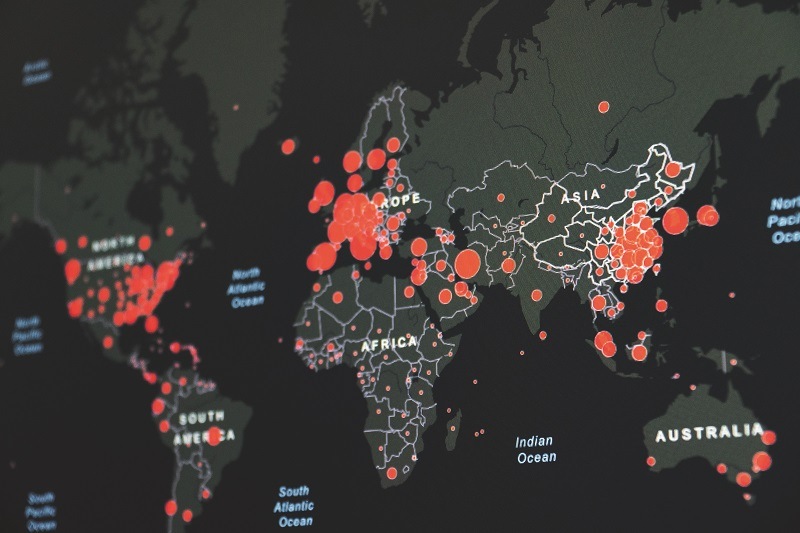 As electrophysiologists worldwide begin the process of restarting elective procedures put on hold due to the COVID-19 pandemic, cardiology departments are braced for a wave of “forgotten” patients whose conditions may have worsened over time.
As electrophysiologists worldwide begin the process of restarting elective procedures put on hold due to the COVID-19 pandemic, cardiology departments are braced for a wave of “forgotten” patients whose conditions may have worsened over time.
This was among the issues discussed in a virtual session held as part of the Heart Rhythm Society (HRS) 2020 Science—titled COVID-19, returning to normal?—in which electrophysiologists from Asia, Europe and North America detailed their experience of having managed arrhythmia patients during the pandemic. Panellists also discussed what the long-term impact of the virus is likely to be on their clinical practice.
“It [COVID-19] has been haunting everybody around the world, but every continent has its own perspective,” said Isabel Deisenhofer (Heart Center Munich, Germany) who moderated the European leg of the three-part COVID discussion. Deisenhofer was joined by Elena Arbelo (Hospital Clinic De Barcelona, Barcelona, Spain), Angelo Auricchio (Fondanzione Cardioccentro Ticino, Lugano, Switzerland), Paolo Della Bella (Ospedale San Raffaele, Milan, Italy) and Christophe LeClerq (CHRU Pontchaillou, Rennes, France) to consider the impact the virus has had on the treatnent of arrhythmias in healthcare centres across Europe.
Arbelo detailed how practice in her centre has been adapted during the pandemic, noting that procedures had been limited only to emergent cases, and that the outpatient clinic was switched to a telehealth platform to serve patients who could be reached in this way. “My role as an electrophysiologist has mainly been to cover, together with one of my colleagues, all the emergent procedures. The other electrophysiology colleagues we have were sent to the ICUs to treat COVID patients, and I think this is the case in some of the countries that have been hit harder,” she explained.
LeClerq set out a similar picture from France, and outlined steps that his centre is taking to begin to reintroduce elective cases into rotation, noting that social distancing measures will impact the rate at which patients can be seen. “To give you an example, we had to cancel more than 1,000 echocardiographies, and more than 500 hospitalisations, mainly for procedures like TAVI [transcatheter aortic valve implantation] and AF [atrial fibrillation],” he said. “Now we are starting again, but as we need some distance between the patients, we have to decrease the speed of the outpatient clinic. As well, we do not want to put two patients in the same room, so we decrease the number of patients we can have in the institution.”
Considering the impact that a reduction in elective caseload will have on patient outcomes, Deisenhofer ventured that there is likely to be a knock-on effect on patient health seen in the coming months. “We saw some patients that would not dare to go to the hospital with arrhythmia, and there are a lot of patients coming to the hospital now with severe heart failure because they waited to go to hospital with their atypical [atrial] flutter, with AFib, with tachycardia myopathies [for example],” she explained. “My feeling is that we will have a lot more difficult and severely ill patients that we should treat in parallel to these COVID-19 patients, who are still there and will still be bothering us for a few months.”
Italy, which was the first country to be severely struck by COVID-19 within Europe, has now seen some restrictions eased, and Della Bella detailed what this has meant in practice within his institution. He noted that while remote monitoring and telehealth has been crucial in managing patient health during the height of the pandemic, many cases, particularly longer lasting arrhythmias, cannot be put on hold indefinitely. “Remote monitoring has been the very important guidance to assess status and progression of these types of arrhythmias,” he told the panel. However, he warned that delaying treatment in some of these cases may cause a backlog further down the line, “the hit will come from, I would not call them forgotten, but timely frozen AF [patients] coming back,” he said.
Speaking from North America, Elaine Y Wan (Columbia University, New York), said it is likely that some complex procedures could be further delayed whilst healthcare resources continue to be tied up in the effort to battle the pandemic. “Generator changes, patients who are symptomatic, who really need urgent care will really be prioritised, while [we] balance the resources and staff members that are available to take care of patients,” she explained. “The physician-patient relationship has changed throughout this COVID-19 era so re-establishing that and having them develop confidence in coming back to the hospital for this procedure is key.”
Read more on this story in Cardiac Rhythm News Issue 48.








